Is a Putter Fitting Worth it? It Removes a Variable or Three
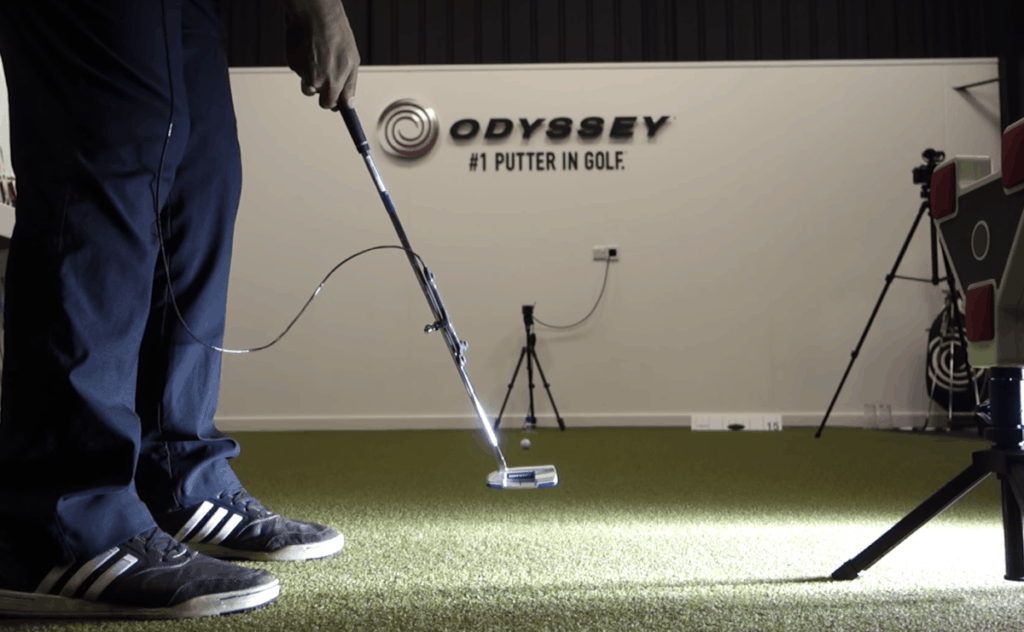
When it comes to any question in relation to golf clubs these days it feels like the solution seems most of the time to be the same – go and get fitted.
When we think about golf club fitting however generally our thoughts instantly turn to drivers and irons but what about your putter?
Given how much the importance of putting is constantly drilled into the minds of every golfer, and how roughly 40% of every standard of golfer’s shots are putts, surely it makes sense that a putter fitting should be the first rather than the last club we think about getting fitted for?
But for the vast majority putter fittings tend to be an afterthought as the value and worth of a good putter fitting may not appear so obvious or well understood.
After all the putting stroke is a very straightforward and short motion compared to a full swing so it’s only natural that many golfers are skeptical as to how important a putter fitting is.
Putter fittings are worth the money if you are serious about improving your putting. Typically costing about $100 and taking 1 hour they act as a putting lesson and fitting combined giving key insights into golfers’ putting strokes and ideal putter weight, length, loft, lie angle and design.
Golf can be a very traditional game however and when it comes to putter fittings you don’t have to look to far for opinions saying such fittings are more about hype than practical use.
Sceptics also often point to the fact that Tiger Woods, arguably the greatest player of all time, has almost always used the same Scotty Cameron Newport 2 GSS [eBay link] putter since 1999, a time when putter fittings weren’t even on the radar.
And a putter fitting for sure won’t solve all your problems on the greens.
It won’t help you read the greens, pick the right spot to hit your putts too or hit the ball for you.
But what it will do for sure is give you a great analysis of both your putting stroke and current putter against some key metrics.
So if you’re serious about your putting and improving it, it surely makes sense to at least keep an open mind when it comes to putter fittings especially if you’re planning on splurging somewhere between $200-$500 on one of the high end designed putters out there these days.
After all your putter is one club, just as in the case of Tiger Woods, which you are likely going to keep for years and years.
So doesn’t it make sense to spend a bit of time and money doing a thorough test through a putter fitting to confirm you’re using the right one compared to just picking one off the shelf on the basis of hitting it a few times on the putting green?

Putter Fitting Benefits are Clear and Numerous
Before we can assess the potential benefits of putter fittings we need first to confirm what we are aiming for when we’re putting in the first place.
That may seem a stupid thing to say because of course the answer is to hole as many putts as possible.
But to achieve that we need to break putting down to its fundamentals which are thankfully also simple and twofold:
- Putting the ball in a ‘straight line’ with the ball rolling ‘end over end’
- Putting the ball the correct distance.
Have a solid putting stroke which does these two things consistently well and you will for certain be a good putter.
Ask anyone who has played golf for any length of time however and they’ll know that is much easier said than done particularly when you add a bit of pressure to the circumstances in which you are putting.
Amateur golfers are also notoriously poor at judging their putting abilities.
Old habits die hard, but using putts per round instead of strokes gained putting is like driving a horse and buggy when a car is parked out front.
Professor Mark Broadie, PGA Tour ‘Strokes Gained’ stats guru and author of ‘Every Shot Counts’ (Amazon link)
Not only are they frequently very quick to blame their putter, the greens, the greenkeeper or anyone else apart from themselves for their current putting woes but they also typically are not using the right metrics to judge their putting performance.
Measuring the number of putts per round is the statistic most amateur golfers use to assess their putting performance. And there is a good reason for this. It’s the easiest putting stat to measure.
But counting your number of putts per round takes no account of the distance you have hit your putts from or the number of greens in regulation you have hit and so is not a great measure of putting performance.
Still not convinced?
Think of this example. Player 1 hits 18 greens in regulation leaving all their putts within 10ft while player 2 who also hits 18 greens but is never closer than 30ft from the hole.
Player 1 has 30 putts in the round producing 6 birdies, while player 2 has 36 putts leaving them without a birdie on the card.
Is player 1 really a much better putter than player 2 as the number of putts per round stat would have us believe?
[Note – if you are interested in finding out more about what putting stats you should be looking at check out our other article on it here]
Now what does all this have to do with putter fitting?
Where putter fitting comes in is and why it is important is that, just like the right putting stats, one of its key benefits is it cuts through the conventional wisdom amateurs associate with their putting and gives clear data to help you figure out what’s going on.
Yes, everyone’s putting stroke looks and is pretty simple, but there are a lot of relevant measures and information a putter fitting can give you to explain why your putter is not as hot as you would like.
These include:
- Length – is the length and grip of your putter the best for your height and arm length?
- Lie angle – does the lie angle of your putter help you to start the ball on target to the spot you’ve picked or does it actually comprise solid contact with the ball?
- Loft – It may seem odd to talk about loft on a putter but when a golf ball comes to rest on a green it settles down slightly into the grass. You therefore need loft so you can propel the ball up and over the small depression it sits in to start it rolling. Too much and your putts will have backspin on them causing them to fall short. Too little and you’ll see the ball going into the green and bouncing in all different directions.
- Weight – The swing weight of your putter, as it is for all the clubs in your bag is critical. But every golfer is different and prefers different weights of putter head. Have a putter head that is the wrong weight for you and you’ll struggle to have either a smooth backstroke or control your putting distances or both!
- Design – You may like me have picked all your putters in the past purely by what looks the best to your eye. And looks do remain a personal choice but a putter fitting’s analysis of your stroke will help determine if you have the right head style for your putting stroke. While mallet style putters typically work best for straight back and through strokes blade style putters often are better for strokes with more arc. In addition alignment aids on certain putters can help players line up better.
If you have never had a putter fitting before I guarantee you it will help you to learn lots about both your stroke and your putter.
There are things it can expose that you just don’t actively think about when you are judging your own putting and putter.
For example whether you focus on the entire shape of your putter or the top line when you are lining putts up because you are either right or left eye dominant.
And the great thing also about a putter fitting is that it acts as a putting lesson at the same time simply because it analyses your stroke in detail.
A good putter fitting with an experienced putter fitter will not inevitably end up with you being asked to spend another couple of hundred dollars or pounds or euros on a new putter.
Many putter fittings will confirm you do indeed have the right putter for your stroke and simply need to work on a small technical adjustment to improve your putting.
Others can result in the fitter suggesting only minor adjustments to your existing putter such as adding a bit of lead tape to get your putter swing weight closer to optimal.
For the sake of around $100 or less average for a good putter fitting it seems to be an odd thing to think it won’t give you some value if you’re struggling with your putting and trying to find out why.
The main goal of putter fittings is to improve your putting stroke consistency. And like the fitting of any golf club it is targeting more to make your bad strokes better rather than make your best strokes better.
An off the rack putter may be either a poor choice for your aim or stroke or both.

So if you’re thinking of spending a hundred dollars or pounds or euros or more on a new one why would you choose not to check it’s going to last you more than a few rounds and wreck your confidence on the greens in the process?
It’s clearly not realistic that a putter fitting is immediately going to get you sinking 10ft putts 100% of the time.
Holing lots of putts requires not just having a consistently good stroke but also necessitates you being able to read greens and pick the right spots to hit your putts too.
But you can at least expect that a putter fitting will eliminate a variable or three to explain why you are currently missing some putts and that surely is worth it for a club that hits roughly 40% of all your golf shots every round!
A Good Putter Fitting Process Will be Thorough
For a putter fitting to be worth it, it’s important that you make sure you get a proper one done.
It will certainly not be worth it if your ‘putter fitting’ simply involves a salesman giving you series of putters, you hitting a few putts and then deciding which one is best based on a quick test of trial and error.
You should expect a putter fitting to involve a complete process taking place in a fitting studio with a trained putter fitting expert using specialist analytical tools and software. It should take at least 45 minutes but can last as long as 1 hour and a half at certain putter fitters.
All good putter fittings are aiming for the same simple thing. And that is to improve your consistency on the greens.
And to achieve this putter fittings are targeting making your bad putts less bad rather than your good putts better.
If the putter’s length, loft, lie and overall weight balance are not matched to each golfer’s style of putting, there is little chance the putter will help lower your score.
Tom Wishon, specialist in club fitting research and development.
When any golfer, including the pros, are putting badly it is because they are not striking their putts consistently on the same part of the putter face each time.
This not only makes putts set off on the wrong line but also makes it very difficult to get the ball rolling at the right speed.
Consequently a comprehensive putter fitting will strive to deliver this high level goal by going through a process that should look something like this:
- Interview – Custom putter fittings will start with a discussion about the state of your current putting. Are you struggling with distance or directional control or both? Or is your problem more about reading greens? A good putter fitter will listen more than talk during this stage and aim to understand your personal preferences and what you think causes you to miss putts. They will also confirm your budget to help them if turns out they would recommend a new putter.
- Static measurements – A putter fitter may also take some static measurements of your body, particularly if they feel that this will impact their recommendations. Your height and the distance from your middle knuckle to the ground when you let your arms hang down beside your body are important when it comes to putter length. If you are tall or have long arms for example this will be a key in determining if you need a more non-standard putter length.
- Technology assessment – The main part of a good putter fitting will then involve you hitting a series of putts first with your current putter and then with other putters of different shapes, offsets and neck-shaft hozels suggested by the fitter. Analysis of your existing putter and putting stroke – the technology used to do this will vary between different putter fitters – will give them some ‘baseline’ numbers on your impact and stroke characteristics etc to then compare against other putters you test out. And as you work through this analsyis together with your putter fitter you will aim to get an ever better understanding of why you are hitting the ball in the direction it’s going. This shouldn’t be a silent part of the session where you simply hit putts and the fitter stares at a computer analysing numbers. A good fitter will be consistently talking to you and listening to get your feedback on what you think.
- Recommendation – At the end of all this testing the custom putter fitter will then finally discuss with you what they would recommend. If you’ve had a consistent dialogue up to this point you’ll probably come to the conclusion together but always remember that whatever the numbers say fitters are simply aiming to help you get as much consistency in your putting as possible. Because consistency is something everyone can work with on the greens particularly when the pressure is on. Expert putter fittings know that if you simply don’t like the look of a putter that you’re less likely to use it no matter what the stats are saying. So they may simply try and find a compromise between what the data is telling them what the best putter is for you compared to the ones you ‘like the look of’ the most. They may indeed propose that you need a new putter but they may equally simply recommend a small tweak to your putting stroke technique or conclude your putting will be fine when the green speed at your local course picks back up to normal in the spring and summer.
Different putter fitting specialists and manufacturers will offer and use different types of proprietary technology for tools and software.
Some for example will be a certified Science & Motion Sports (SAM) putt lab while others will likely use Quintic Ball Roll technology or the CAPTO analysis system.
Manufacturers such as Ping by comparison use their own ‘iPing’ assessment system which gives a calculated ‘consistency score’ to highlight how important a consistent stroke is to putting.

Whatever putting fitter you go to however just check that you’re going to get a proper service from a certified fitter using some kind of specialist technology before you spend your hard-earned money.
Also with some putter fitting sessions lasting up to an hour and half it can be a tiring process with a lot of new data and information to take in all at once.
To get the most out of your fitting therefore be prepared to do some work and feedback rather than just accepting what the fitter says even if you don’t think you believe it.
If you don’t understand the data or the terminology being used just say so and a good fitter will break it down in a way you can follow.
Putting numbers and terminology can take a bit of getting used to and it’s not just a case of looking at the numbers, adding them into the computer formula and accepting the putter proposed at the other end will automatically make you hole more putts.
It’s a dialogue and you need to participate in it to get the most out of it.
To help also here is a summary table of the five main elements a putter fitting session will cover through the process:
| Putter component | Putting impact | Decision Factors |
| Design | -Direction control -Distance control | – Personal feel and choice. – Stroke type. Mallets work best for straight strokes while blade putters suit arcing ones. – High / low ‘moment of inertia’ (MOI) faces. High MOI putters are more forgiving. – Different head shapes impact on alignment. |
| Swing Weight | -Direction control -Distance control | – Personal feel of the relationship between the putter head and length. – Too heavy or too light and distance control becomes increasingly difficult. |
| Lie angle | -Direction control | – An incorrect lie angle which is not parallel to the ground leads to the ball not going in the direction the putter head is pointing. – Ping standard is 20 degrees for example. |
| Loft | -Distance control | – Amount of ‘dynamic loft’ at impact needs to be 3 to 4.5 degrees and is affected by stroke. – Affected by combination stroke type, putter loft and shaft lean number. |
| Length | -Direction control -Distance control | – Putter length dependent on putting stroke type and player height and arm length. – Average standard length on PGA Tour is 33 to 33.5 inches for men. Women typically fit into 31 to 32.5 inches. |
We would repeat that even after running through a detailed putter fitting process such as that described above all your putting problems will not automatically be solved.
Your putter is still held by a human being – you – and as every golfer knows only too well we all frequently make mistakes and especially on the greens when the pressure seems to be felt much more keenly than in other areas.
In addition as with all golf equipment choices there will be an element of hype from the golf manufacturers.
It won’t take you long looking online for example to find marketing material for a new type of putter which ‘revolutionises’ putting or has a new groove or insert design which ‘guarantees’ to improve putting roll.
The difference between a $100 and $250 putter can be negligible for many players, particularly as putting technology has advanced alongside other clubs for the past couple of decades.
But a good putter fitter will help guide you through this marketing maze and won’t try to sell you something you don’t need.
“A good putter fitting process will be the combination of an evaluation of the best putter for you combined with a putting lesson.“
Golf.com
They won’t also be afraid to tell you that the data and their expert opinion shows them that your current putter is fine and that a small change to your stroke will solve a lot of your problems rather than a new putter.
Or they may say all you need to do is add some lead tape to your putter head to improve the swing weight or take half an inch off the length in order for it to better match your putting technique.
And if that’s the case that should give you at least a confidence boost and help you narrow down further where your putting problems lie.
After a good putter fitting process has analysed your stroke and putter in detail the answer could just simply be you need to get better at reading greens!
How Much does a Putter Fitting Cost?
To judge whether a putter fitting is ‘worth it’ you obviously have to consider the cost.
A putter fitting will cost between $40 and $150 in the USA. In the UK costs vary between £30 and £125. Variance in costs will typically be explained by the amount and quality of the technology used for analysis during the fitting session or the experience of the putting fitting specialist or both.
As is common in retail however the ‘header’ price is sometimes only half the story.
Different golf club fitters often offer ‘bundle’ packages of for example ‘wedge and putter fittings’ or ‘irons, wedges and putter’ fittings where the individual price of the putter fitting is reduced by virtue of being part of the bundle.

In addition, different club fitting specialists offer a ‘refund’ of the cost of the putter fitting against the cost of a new putter should you choose to buy one as a result of the session.
Other putting fitters also run sales at certain points of the year so these are always a good way of reducing the cost of your custom putter fitting.
The big golf club manufacturers in addition frequently run ‘fitting days’ throughout the year in different parts of the country to market their clubs and it is common for no fitting fees to be charged on these days.
Clearly anyone considering a putter fitting session should confirm the price and any conditions attached to it before going ahead but for a good putting fitting session alone it is unlikely you will get much if any change out of $100 or pounds.
Whether this cost is worth it considering the benefits outlined above is up to each individual based on their own financial circumstances and how much they play the game.
“If you are playing on slower, granier [green] surfaces you might a little bit more loft as the ball is sitting in a little bit more of a deeper depression. On faster surfaces like bent grass that doesn’t have a lot of grain in it you could maybe take a little bit of loft off because it’s just going to be a faster surface and that ball is not sitting in the depression as much.”
Ping HQ putter fitting specialist
Golf is an expensive sport as it is and if you consider this average cost of around $100 plus potentially the additional cost of a new putter at a hundred or many hundreds of dollars a putter fitting could prove to be a costly exercise.
If you don’t play much or just play for fun I would question whether it is worth it but if you play regularly and have issues with your putting I would recommend keeping an open mind and trying out a putting fitting session.
Just make sure the club fitter is clear on your budget up front and it will at the very least give you an excellent putting lesson and maybe help you hole those crucial putts much more regularly!
Where Can You Get a Putter Fitting Done?
If after considering the benefits are worth the cost the obvious question that follows is where you can get putter fittings done?
Thankfully as custom fittings become ever more part of the golfing landscape the number of options for putter fittings continues to grow.
Putter fitting venues will however likely fit into one of the following 5 categories:
- Golf retailers – Golf stores typically have loads of makes and models in stock and some of them will also offer custom club fitting services including putter fittings.
- Club professional – One of the simplest places to look for a putter fitting is with your local professional if you are a member of a golf club or a club pro is attached to the nearest public course to you. If you know them well it can be a great option to explore your putter options.
- Manufacturing Fitting Centres – If you can’t see your way past a Ping putter for example going straight to the manufacturer for a putter fitting is an option. Clearly you will be restricted to one brand of putters but the technical and analytical setups at these centres can be tough to beat.
- Demo days – Leading putter manufacturers will often send their representatives across the country to demonstrate their putters to local clubs. Keeping an eye out on when one of these days next rolls into your town is a great chance to test out their latest putters and get fitted.
- Independent club fitters – Specialist putter fitters will let you test out multiple brands and options and as their focus is often solely on fitting services they use the latest technology to analyse your putter and stroke.
What specific location suits you the best will of course depend on geography and on what venues are located and available close to where you play.
Whether you have a choice of multiple venues or not though just remember it is important that you ensure whatever putter fitting service they offer compares approximately to the process we outlined above.
Make sure that the fitter has specialised knowledge of putter fitting and ideally is a certified user of analytical putter technology that is going to give you a good insight into your existing putting capabilities.
Also make sure where you can that the putter fitter you choose is a good personality fit for you. If you prefer a certain style of being taught about golf then pick a putter fitter that fits that style.
Remember good putter fitters want the best for your game and to make you as consistent a putter as possible and choosing a good one can make a real difference to your putting and therefore general game.
Good fitters will also not try and simply sell you equipment so if you find your fitter often giving you the heavy sales talk you can be pretty sure they’re not being honest with you.
If you feel that’s the case just find someone else.
Any fitter also can look at putter fitting software and read the numbers on the screen but a well-skilled putting fitter will use their expertise to interpret those numbers in the best way for your putting.
And they’ll have the knowledge and experience to know when the raw numbers maybe don’t tell the whole story and use what you are telling them to guide you in the right direction.
[Note – We recently put together a complete guide on the best places to get fitted for golf clubs in the US, Canada and the UK to help you find a putter fitting venue near you. Check it out here!]
Can You Fit Yourself for a Putter?
Sceptics of the value of putter fittings, or those golfers who maybe don’t have a good putter fitting facility near them, can sometimes ask the question of whether they can simply fit themselves for a putter?
After all it’s just a club that requires you hit the ball by swing it a few inches back and forward.
You can try and fit yourself for putting fitting variables such as putter length and design. Key putter factors which influence putting ability such as lie angle, putter loft and swing weight are though much better analysed by a certified putter fitter using specialised tools and software.
As we saw earlier in this article the five main elements that are looked at during a putter fitting session are – putter length, design, loft, lie angle and swing weight.
All these factors influence the consistency of your putting and there are some that you can look to analyse yourself to give you a basic check of whether your putter is right for you.
For example the length of your putter affects your set up hugely and consistently good putting strokes are built on solid putting set ups.
How long your putter is will influence the distance you stand from the ball, how much you bend over to putt and how bent or stretched out your arms are.
And these are the following general averages when it comes to putter lengths based on player heights which you can easily compare yourself to:
- 6ft 4 inches tall golfers – 36 inch average putter length
- 6ft 2 inches – 35 inches
- 6ft – 34 inches
- 5ft 9 inches – 33 inches
- 5ft 6 inches – 32 inches
- 5ft 3 inches – 31 inches
Golf Digest Top 50 USA Teacher, Todd Sones, also offers a more accurate DIY method to assess the best putter length for you by measuring both your height with no shoes and the distance from your knuckles to the ground.
If you can there is also nothing to stop you from experimenting with different head designs of putters on your own on the putting green.
Try out different mallet and blade style putters across a wide range from face balanced to extreme toe hang and see which ones both feel the best and suit your type of stroke better.
You can also find doing this whether different head shapes help you align better than others.
Checking the length of your putter and testing out different models by yourself is definitely an option if you want to try and ‘fit’ your putter on your own.
Just be aware though this approach will never give you as detailed insight and analysis of your putter and putting as a specialist putter fitting from a certified fitter will.
Final Thought
Is there an actual problem with your putting or do you just like switching putters often?
If it’s the latter or your putting is just fine and your stats are good at the moment there seems little reason to go for a putter fitting.
Also if you are just not someone who responds well to a more data-driven approach to golf and prefer to work a lot of things out by feel and intuition again a putter fitting or any fitting may not work for you.
Not everyone, including me, are constantly obsessed with checking my latest swing speeds, launch angles etc after every shot.
The goal of golf never changes and that is simply to get the ball in the hole in as few strokes as possible no matter what equipment you’re playing with.
But if you’re putting badly and can’t quite figure out why, or are simply open-minded as to whether a putter fitting could maybe help you hole an extra putt here and there, I guarantee you will find a putter fitting to be at the very least informative and at best transformative.
Far too many amateur golfers simply accept the clubs they are given off the rack and know too little about how clubs fitted to them can help them play better.
A putter fitting will never on its own provide the single answer to the ‘why am i missing putts’ question.
It will I am confident though at least start to remove one or two of the variables for you.
[Note – Just so you know, and we are upfront as an affiliate program participant, Golfing Focus, at no cost to you, earns from qualifying purchases made through links on this page.]
Other great articles related to this topic:
- Are Putting Lessons Worth It? We Surveyed Over 100 Golfers
- Can You Get Your Existing Golf Clubs Custom Fitted? Complexity = Cost
- Should High Handicappers Get Fitted Clubs? The Benefits Apply to All
- How Much Does a Golf Club Fitting Cost? Is it Worth it?
- Should I Get Fitted for Golf Clubs Before Lessons? Get Both Together
- How Often Should You Get Fitted for Clubs? Use the 3 Tests
- Best Places to Get Fitted for Golf Clubs – A Complete Guide
- Should a Beginner Get Golfer Fitted for Clubs? Focus On Enjoyment
- How Long Should a Club Fitting Take? Take Your Time!
- What Is the Best Practice Putting Mat? An Owner of 7 Reviews (2022)
- What Percentage of Putts Do Pros Make? TV Does Not Tell the Story
RECENT ARTICLES
LEGAL INFORMATION
This site is owned and operated by Golfing Focus Limited, a private limited company whose registered office is in London, UK. Golfing Focus Limited is a participant in the Amazon Services LLC Associates Program, an affiliate advertising program designed to provide a means for sites to earn advertising fees (at no cost to you) by linking to Amazon.com. Golfing Focus Limited also participates in other affiliate programs with the eBay Partner Network, FlexOffers, CJ.com, Svorn and other sites and is compensated for referring traffic and business to these companies (again at no cost to you).
Our Socials


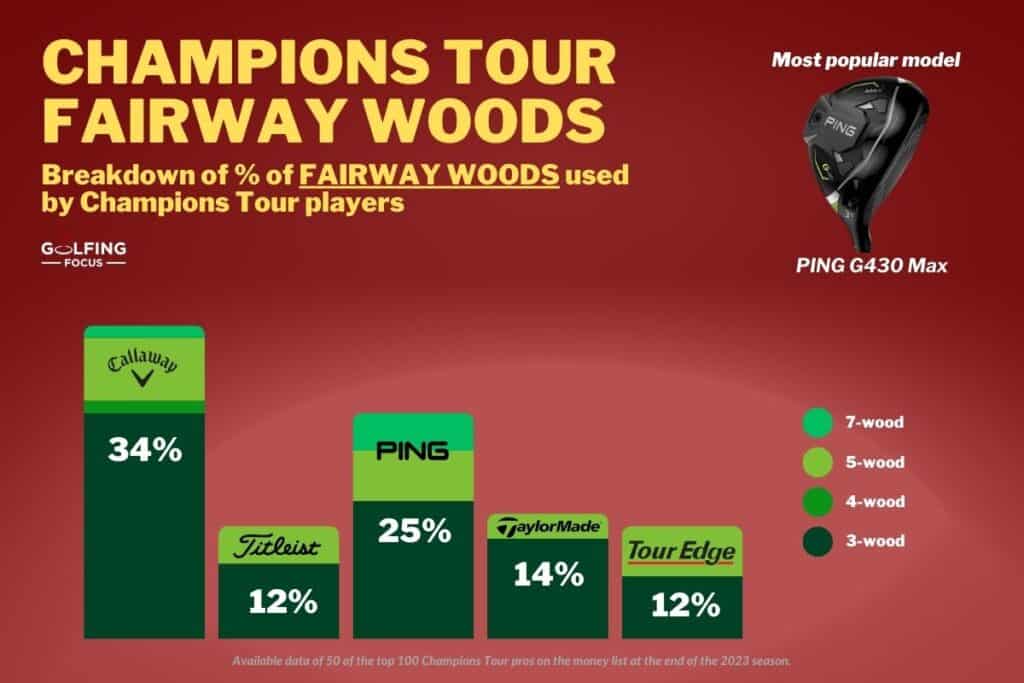
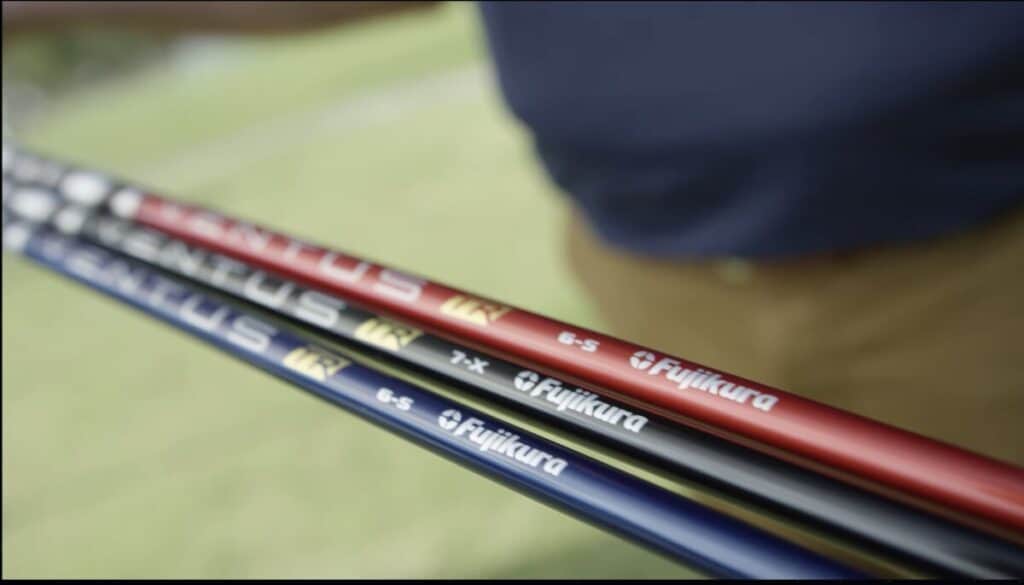
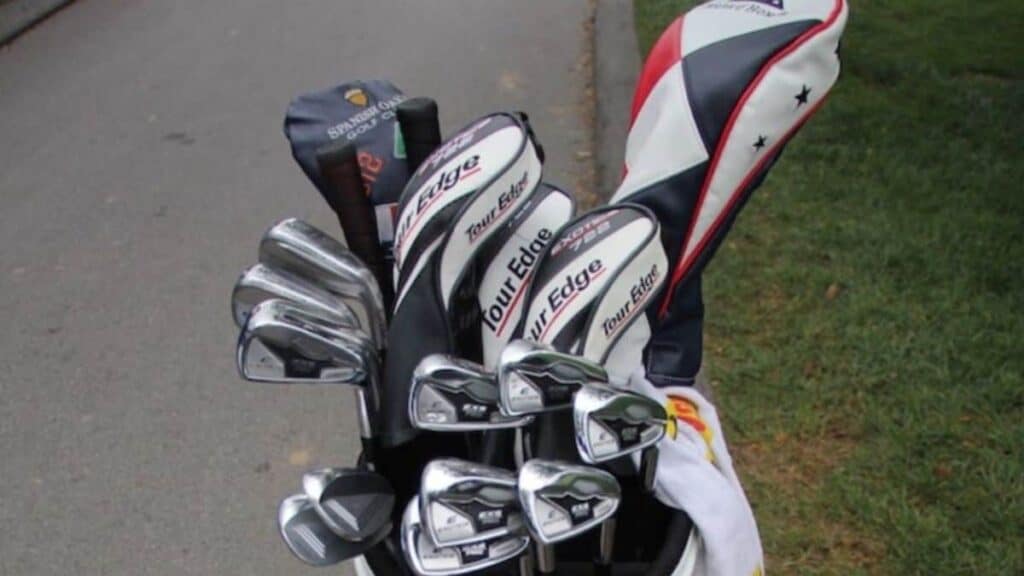
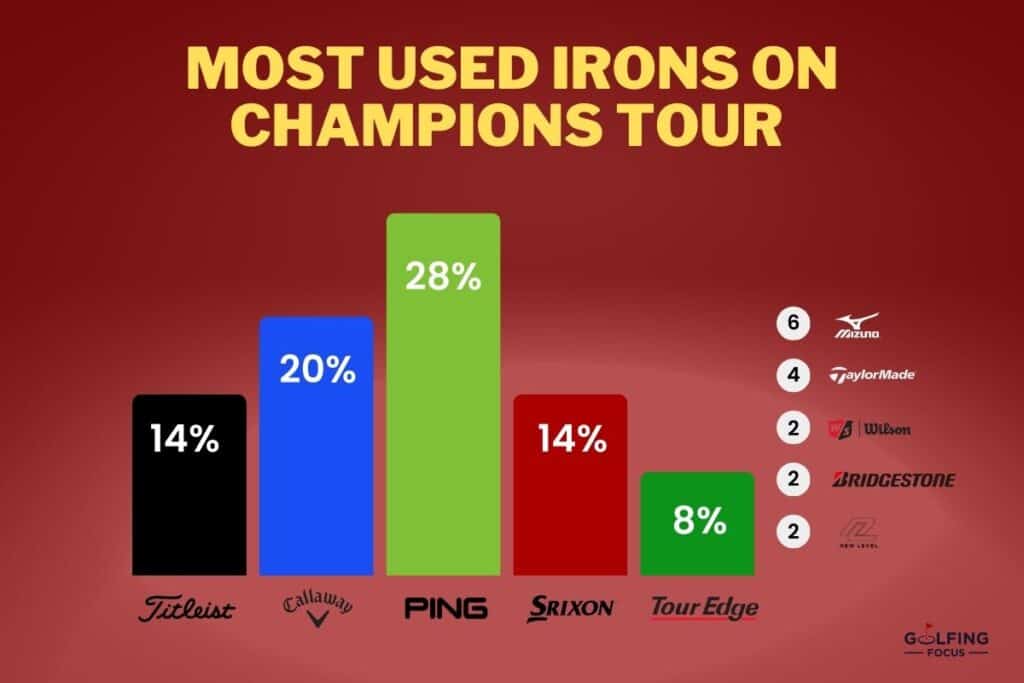
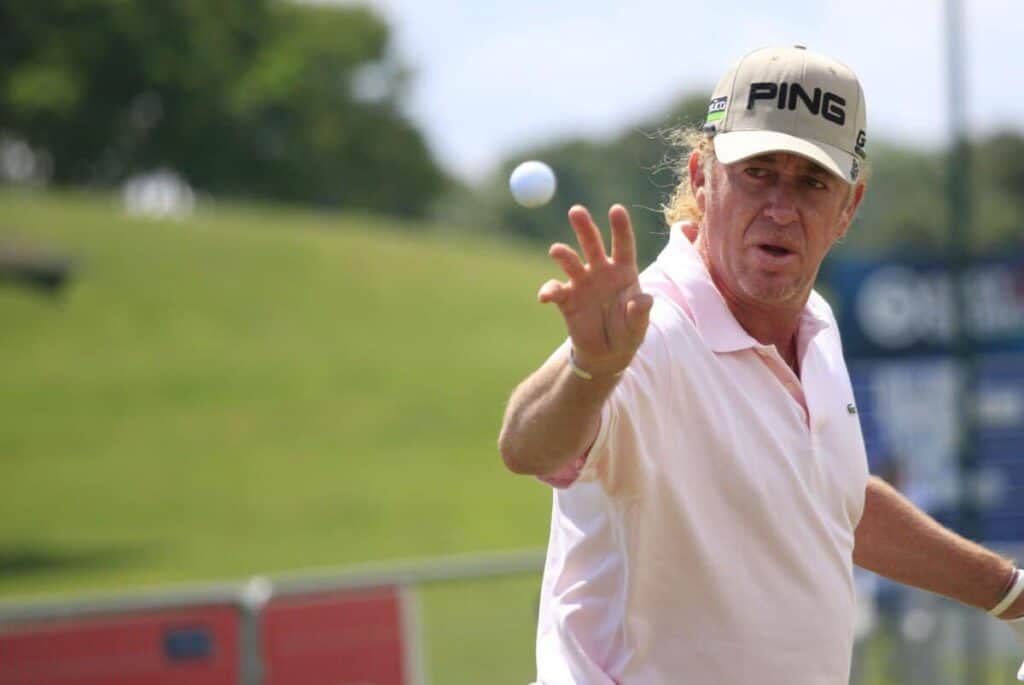
Leave a Reply